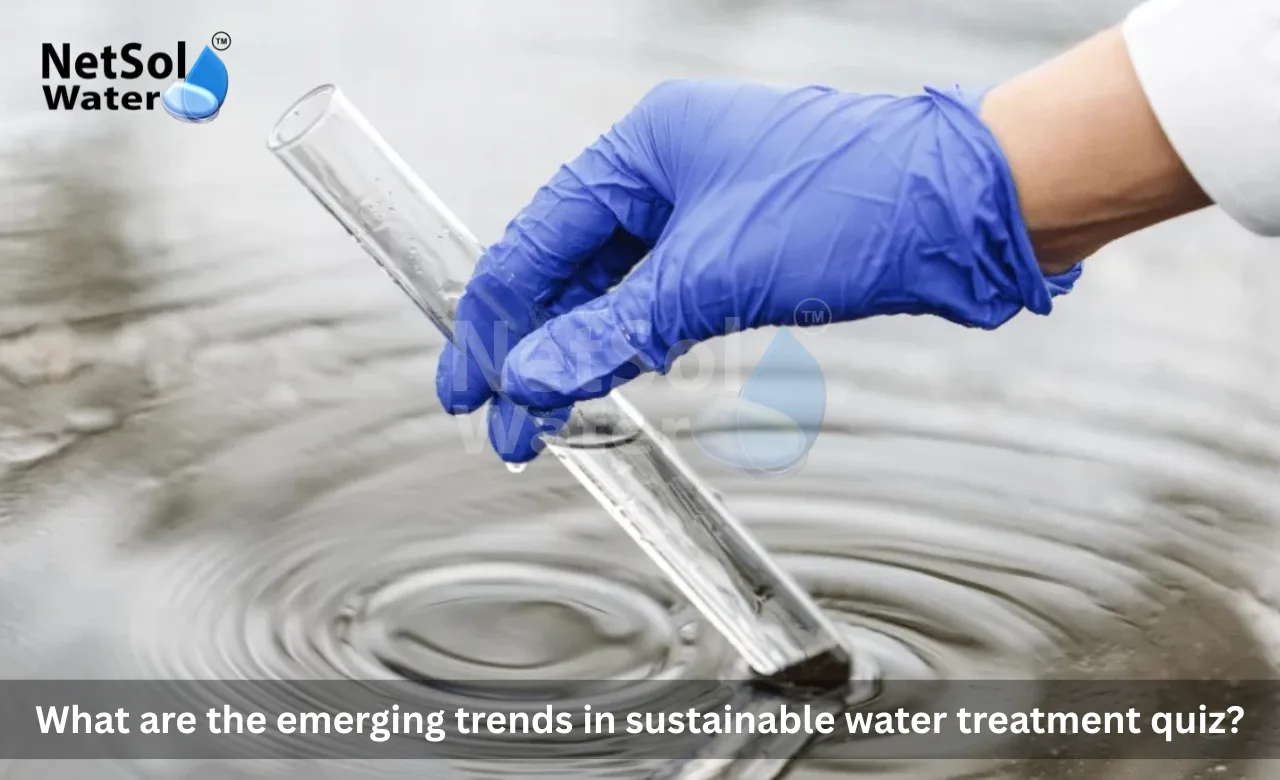
What are the emerging trends in sustainable water treatment quiz?
Sustainable water management grows more important each year as and industries face water shortages and stricter rules. Netsol Water is the leading Water Treatment Plant Manufacturer and it helps clients adopt new methods. India is known for fast urban growth and heavy industrial use of water. People here need clear answers on how to save water and treat it safely. We will explore the emerging trends in sustainable water treatment.
Digital and Smart Technologies in Water Treatment
Understanding digital tools helps people run Water Treatment Plants with less waste and more control. Let us have a look on some technologies that change how plants work and how staff learn faster and respond better.
Sensors and Real Time Monitoring
Smart sensors send live data on flow quality and pressure. Operators can watch this data on simple screens. Plants save water and reduce downtime because staff act fast. Remote monitoring lets experts help from a distance. Automated alarms bring attention to unusual changes at once. The result is a cleaner output and steady operations. People use that data to plan maintenance and to tune processes for higher efficiency.
AI and Predictive Control
AI models analyze sensor data and predict what will happen next. AI helps adjust pumps filters and chemical dosing without human delay. The models spot trends that humans might miss. Plants cut power use and lower costs when they use predictive control. Training the models does not take weeks. Teams feed past data to the system and it learns patterns. This reduces surprises and helps staff make better decisions. Small plants and large plants both gain from these tools.
Nature Based and Resource Recovery Approaches
Using nature based methods and recovering resources makes Water Treatment Plant work smarter for the environment. Let us have a look on some methods that use natural cycles and that help communities gain more from treated water.
Constructed Wetlands and Green Processes
Constructed wetlands mimic rivers and lakes to filter water with plants and microbes. Designers shape shallow beds and steady flows so plants can remove nutrients and sediments. These plants need less power than many mechanical units. Communities use them in small towns and at industrial sites. The result is clear water and added green space that supports birds and insects. Wetlands also lower maintenance needs because plants do much of the work naturally. When a wetland pairs with a mechanical unit the overall cost can drop and the output can meet strict standards.
Resource Recovery and Circular Use
Treating water can recover useful materials such as nutrients and biogas. Anaerobic digesters break down sludge and produce gas that plants burn for heat or power. Other units recover phosphorus and nitrogen for use as fertilizer. Recovering these items reduces waste truck trips and cuts chemical buys. This approach turns a Water Treatment Plant into a resource hub. Cities and factories that embrace this method lower landfill inputs and gain steady supplies for gardens and fields. This method also gives new income streams that help pay for upgrades.
Read some interesting information for Commercial RO Plant Manufacturer
Conclusion
Digital tools and nature based approaches both play strong roles in this change. Netsol Water is the leading Water Treatment Plant Manufacturer and it can guide you from design to operation. If you want to learn more or if you need a consultation reach out to the team for a clear plan and for help on choosing the right mix of technology and nature based design. A short call or a site visit can start a plan that saves water and reduces costs over time.
Contact Netsol Water at:
Phone: +91-9650608473
Email: enquiry@netsolwater.com
